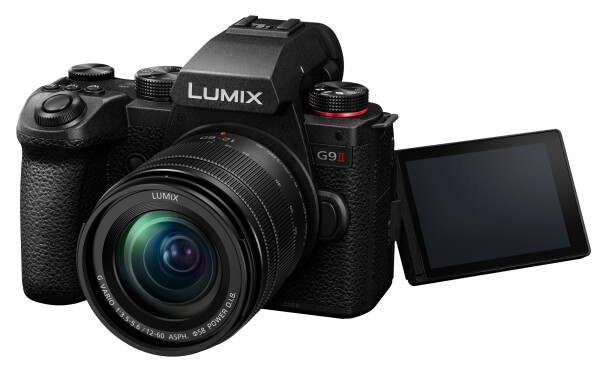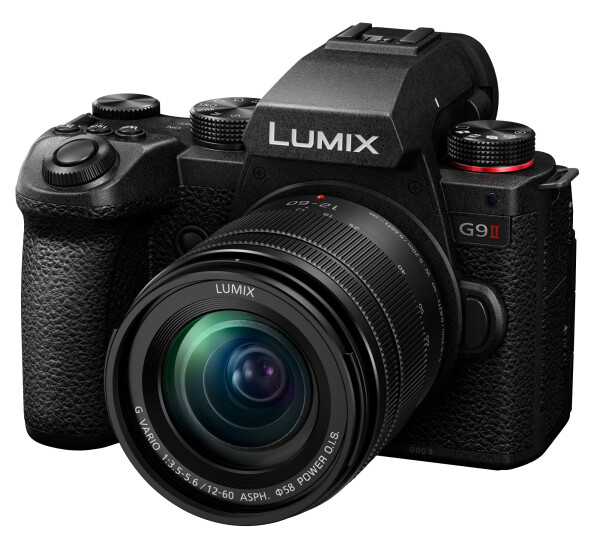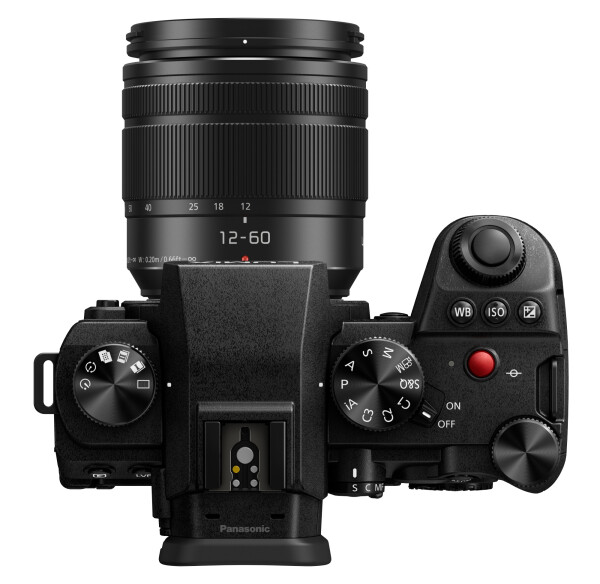That the popular Panasonic G9 will get a successor had been hinted at in recent months. Nevertheless, the G9 II has become a much bigger surprise than originally expected. Especially for filmmakers.
The first surprise is the housing: it is hardly distinguishable from the housing of the full-frame model S5 II, except for the type designation. Panasonic thus forgoes one of the "biggest" MFT advantages - namely being able to accommodate this sensor class in particularly compact housings. In return, there is really something "in the hand" for professional users. All important functions are accessible from the outside of the LUMIX G9II body and most accessories that fit on the S5II should also fit on the G9II, including cages.

The new Panasonic LUMIX G9II
Aporops accessories: still little information, but there was already a hint of a new DMW-BG1(E) battery grip that should be compatible with both the LUMIX G9II and the LUMIX S5II(X). This is equipped with an 8-direction joystick and should be able to double the battery life of the cameras.
Besides two SD card slots, the G9II also has a large HDMI output. Which leads us to the second surprise: The G9II inherits most of the GH6&s features for filmmakers. Admittedly, a few codecs with particularly high data rates are missing for internal recording (which would end up on the CFexpress card on the GH6). But external recording to a USB SSD is now also possible with the G9II. Even the "full" V-Log profile is included without having to buy it as an additional license.

The new Panasonic LUMIX G9II
The built-in, articulating MFT sensor has 25.2 megapixels and allows filming in 5.7/5.8K up to 30p as well as (C)4K recording at up to 120p. In addition to MOV/MP4 in All-Intra or LongGOP with up to 10-bit 4:2:2, ProRes (HQ) can also be recorded - the 4K ProRes formats, however, "only" on an external USB-SSD.
The special  Dynamic Range Boost feature of the GH6 has even been activated permanently now and switches off automatically from 61 fps. Thus, the G9II together with the GH6 should currently be able to offer the best dynamic range of all MFT cameras on the market.
Dynamic Range Boost feature of the GH6 has even been activated permanently now and switches off automatically from 61 fps. Thus, the G9II together with the GH6 should currently be able to offer the best dynamic range of all MFT cameras on the market.
Panasonic emphasizes that the G9II now uses the new Phase Hybrid Autofocus, which should put the camera at least on par with the current S5II in terms of autofocus performance.

The new Panasonic LUMIX G9II
Panasonic also treats its filmmakers to the full lineup when it comes to other features: there are features like 4-channel audio (up to 96kHz 24-bit with the optional XLR module), histogram and other metering tools, and a new real-time LUT integration.
The LUMIX G9II is scheduled to be available in November 2023. The DC-G9M2E camera body will cost €1,899. There are also to be two kits: DC-G9M2ME (camera + H-FS12060E) for 2,099 euros and the DC-G9M2LE kit (camera + H-ES12060E) for 2,499 euros. The battery grip DMW-BG1E should then also be available for 349 Euros.

